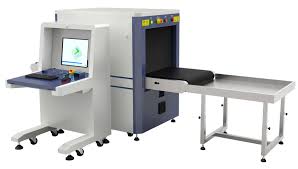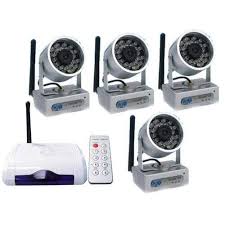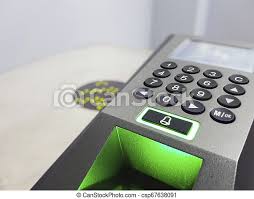X-Ray Baggage Scanner: Ensuring Security in Transportation
With the increasing concerns over security threats in various public spaces, including transportation hubs such as airports, train stations, and bus terminals, the need for advanced screening technologies has become paramount. Among these technologies, X-ray baggage scanners play a crucial role in ensuring the safety and security of passengers and their belongings.
An X-ray baggage scanner is a sophisticated imaging system that uses X-ray technology to create detailed images of the contents of luggage and bags. These scanners are designed to detect any suspicious or prohibited items concealed within baggage, such as weapons, explosives, or other dangerous materials.
One of the key advantages of X-ray baggage scanners is their ability to provide security personnel with real-time images of the scanned luggage. This allows operators to quickly identify any potential threats and take appropriate action to ensure the safety of individuals and prevent security breaches.
Furthermore, X-ray baggage scanners are equipped with advanced features such as automatic threat detection algorithms and material discrimination capabilities. These features enable the scanners to differentiate between various materials and identify potential threats accurately, reducing the chances of false alarms and enhancing operational efficiency.
In addition to their primary function of detecting security threats, X-ray baggage scanners also offer benefits in terms of operational convenience and passenger throughput. By streamlining the screening process and minimizing manual inspections, these scanners help expedite security checks while maintaining high levels of accuracy.
Overall, X-ray baggage scanners play a vital role in enhancing security measures at transportation facilities by providing reliable detection capabilities and improving operational efficiency. As technology continues to advance, these scanners will evolve to meet the evolving challenges posed by modern security threats, ensuring safe travel experiences for passengers worldwide.
Essential FAQs About X-Ray Baggage Scanners: Functionality, Safety, and Regulations
- How does an X-ray baggage scanner work?
- What can X-ray baggage scanners detect?
- Are X-ray baggage scanners safe for passengers’ belongings?
- Do X-ray baggage scanners emit harmful radiation?
- What are the different types of X-ray baggage scanners available?
- How are suspicious items identified by X-ray baggage scanners?
- Are there any regulations governing the use of X-ray baggage scanners in transportation facilities?
- Can X-ray baggage scanners differentiate between organic and inorganic materials?
How does an X-ray baggage scanner work?
An X-ray baggage scanner works by emitting high-energy X-ray beams through luggage or bags to create detailed images of their contents. These X-ray beams pass through the materials inside the baggage and are captured by detectors on the other side. Different materials absorb X-rays in varying amounts, resulting in variations in the intensity of the detected X-rays. The scanner then processes these intensity differences to generate a grayscale image that highlights the different densities of materials within the baggage. Security personnel can analyze these images to identify any suspicious items that may pose a threat, such as weapons, explosives, or prohibited items. By providing a non-intrusive and efficient method of screening luggage, X-ray baggage scanners play a crucial role in enhancing security measures at transportation hubs and ensuring the safety of passengers and staff.
What can X-ray baggage scanners detect?
X-ray baggage scanners are sophisticated imaging systems designed to detect a wide range of items and materials concealed within luggage and bags. These scanners can effectively identify various objects, including weapons, explosives, drugs, liquids, electronics, metals, and other prohibited or suspicious items. The advanced technology used in X-ray baggage scanners allows them to provide detailed images that enable security personnel to quickly and accurately identify potential threats and take appropriate action to ensure the safety and security of individuals in transportation hubs such as airports, train stations, and bus terminals.
Are X-ray baggage scanners safe for passengers’ belongings?
X-ray baggage scanners are designed to be safe for passengers’ belongings. These scanners use low levels of radiation to create detailed images of the contents of luggage without causing any harm to the items inside. The radiation levels emitted by X-ray baggage scanners are well below the established safety standards set by regulatory authorities. As a result, passengers can rest assured that their belongings will not be damaged or altered in any way during the scanning process. Additionally, security personnel are trained to handle luggage with care to prevent any mishandling or damage. Overall, X-ray baggage scanners are considered safe and effective tools for enhancing security measures at transportation facilities while ensuring the protection of passengers’ belongings.
Do X-ray baggage scanners emit harmful radiation?
X-ray baggage scanners used for security screening purposes emit very low levels of radiation that are considered safe for passengers and operators. These scanners are designed to comply with strict safety regulations and guidelines to ensure that the radiation exposure is well below the established limits set by health authorities. The amount of radiation emitted by X-ray baggage scanners is minimal and poses no significant health risks to individuals undergoing screening. As such, passengers can feel confident that the use of X-ray baggage scanners in security checkpoints is a safe and effective means of ensuring their safety during travel.
What are the different types of X-ray baggage scanners available?
When it comes to X-ray baggage scanners, there are different types available to cater to various security needs and operational requirements. The most common types include dual-view scanners, single-view scanners, and 3D computed tomography (CT) scanners. Dual-view scanners provide images from two different angles, offering enhanced detection capabilities. Single-view scanners are more basic but still effective for routine screening tasks. 3D CT scanners offer detailed three-dimensional images for thorough inspections of complex objects. Each type of X-ray baggage scanner has its unique features and benefits, allowing security personnel to choose the most suitable option based on their specific security protocols and screening needs.
How are suspicious items identified by X-ray baggage scanners?
X-ray baggage scanners identify suspicious items through the analysis of X-ray images generated during the scanning process. These scanners use advanced imaging technology to create detailed images of the contents of luggage and bags, allowing security personnel to visually inspect the items for any anomalies or potential threats. Suspicious items are identified based on their shape, density, and material composition, which may differ from normal items typically found in baggage. Additionally, X-ray baggage scanners are equipped with automatic threat detection algorithms that help flag any objects that match predefined threat profiles, enabling operators to quickly identify and respond to potential security risks. By combining sophisticated imaging capabilities with intelligent detection algorithms, X-ray baggage scanners play a crucial role in enhancing security measures and ensuring the safety of passengers and transportation facilities.
Are there any regulations governing the use of X-ray baggage scanners in transportation facilities?
Regulations governing the use of X-ray baggage scanners in transportation facilities are crucial to ensure the safe and appropriate implementation of this technology. In most countries, there are specific guidelines and standards set by regulatory bodies or government agencies that dictate the usage, maintenance, calibration, and training requirements for X-ray baggage scanners. These regulations often focus on factors such as radiation safety, image quality standards, operator training, data privacy protection, and compliance with international security protocols. Adhering to these regulations not only helps maintain the effectiveness and accuracy of X-ray baggage scanners but also ensures the protection of passengers’ rights and safety during security screening processes at transportation facilities.
Can X-ray baggage scanners differentiate between organic and inorganic materials?
X-ray baggage scanners are equipped with advanced technology that allows them to differentiate between organic and inorganic materials. These scanners utilize a combination of X-ray imaging and material discrimination algorithms to analyze the composition of objects inside luggage or bags. Organic materials, such as clothing, food items, and paper, have distinct characteristics that can be identified by the scanner’s software. In contrast, inorganic materials like metals, plastics, and ceramics exhibit different X-ray absorption patterns that enable the scanner to distinguish them from organic substances. This capability helps security personnel accurately identify the contents of baggage and detect any suspicious items that may pose a threat, enhancing the effectiveness of security screening processes.



